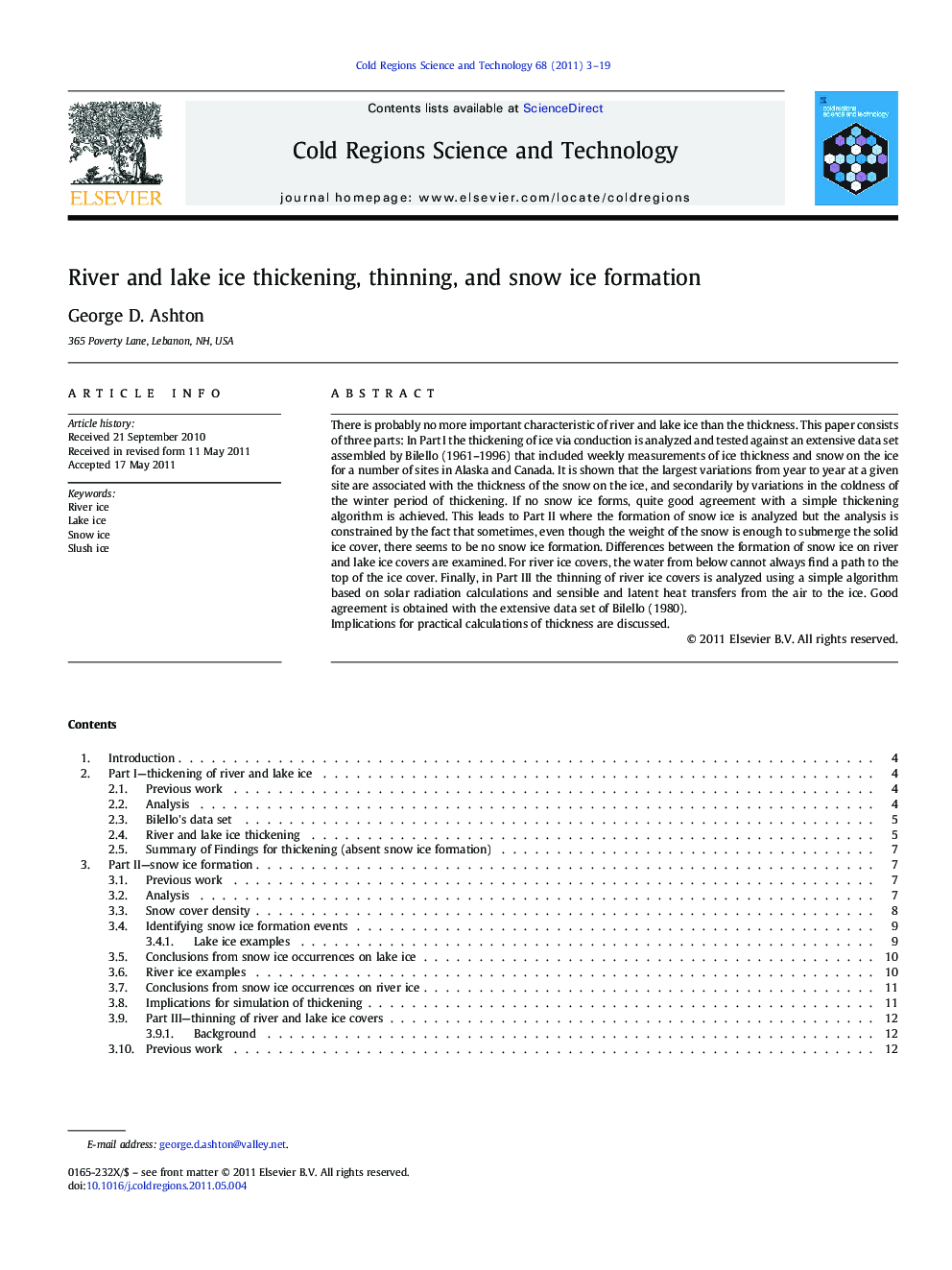| Article ID | Journal | Published Year | Pages | File Type |
|---|---|---|---|---|
| 4676136 | Cold Regions Science and Technology | 2011 | 17 Pages |
There is probably no more important characteristic of river and lake ice than the thickness. This paper consists of three parts: In Part I the thickening of ice via conduction is analyzed and tested against an extensive data set assembled by Bilello (1961–1996) that included weekly measurements of ice thickness and snow on the ice for a number of sites in Alaska and Canada. It is shown that the largest variations from year to year at a given site are associated with the thickness of the snow on the ice, and secondarily by variations in the coldness of the winter period of thickening. If no snow ice forms, quite good agreement with a simple thickening algorithm is achieved. This leads to Part II where the formation of snow ice is analyzed but the analysis is constrained by the fact that sometimes, even though the weight of the snow is enough to submerge the solid ice cover, there seems to be no snow ice formation. Differences between the formation of snow ice on river and lake ice covers are examined. For river ice covers, the water from below cannot always find a path to the top of the ice cover. Finally, in Part III the thinning of river ice covers is analyzed using a simple algorithm based on solar radiation calculations and sensible and latent heat transfers from the air to the ice. Good agreement is obtained with the extensive data set of Bilello (1980).Implications for practical calculations of thickness are discussed.
